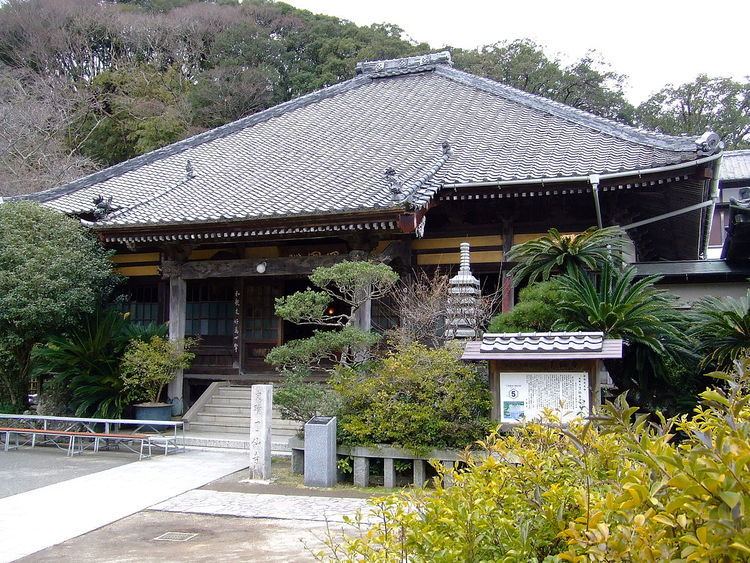Affiliation Nichiren sect Completed 1635 Phone +81 558-22-0657 | Opened 1635 Founder Nitchō | |
 | ||
Address 12-12 3 Chome, Shimoda, Shizuoka Prefecture 415-0023, Japan Similar Gyokusen‑ji, Shimoda Ropeway, Shimodakaikoku Museum, Hōfuku‑ji Temple, Shimoda Aquarium | ||
ryosenji temple shimoda izu shizuoka japan travel
Ryōsen-ji (了仙寺) is a small Buddhist temple in Shimoda, Japan. It is noteworthy as the location of the signing ceremony for the Treaty of Amity and Commerce (also known as the Harris Treaty) between the Tokugawa shogunate of Japan and the United States of America on July 29, 1858. Due to this connection, the temple grounds and main hall have been designated as a National Historic Site by the Japanese government.
Contents
History
Ryōsen-ji was founded in 1635 by the Nichiren sect prelate Nitchō, with the support and patronage of 2nd Shimoda bugyō Imamura Masanaga. Three large Gorintō stone monuments on the grounds (the graves of a number of the Shimoda bugyō) are designated as Shimoda City historic monuments. During the visit of Commodore Matthew Calbraith Perry to Shimoda in 1854 in one of the initial attempts by the United States to end the national isolation policy of the Japanese government, the temple had been designated as his shore residence.
The temple has a small museum, which displays a number of artifacts related to Commodore Perry, the Black Ships, and contact between Japan and the West. In recent years, the temple has also been noted for the profusion of jasmine flowers in its gardens.
